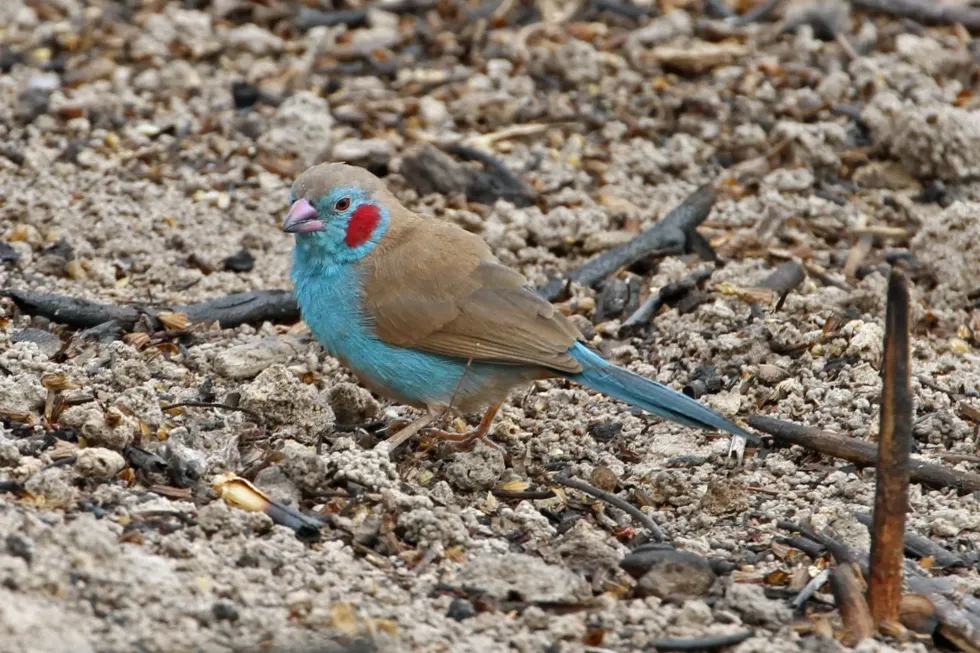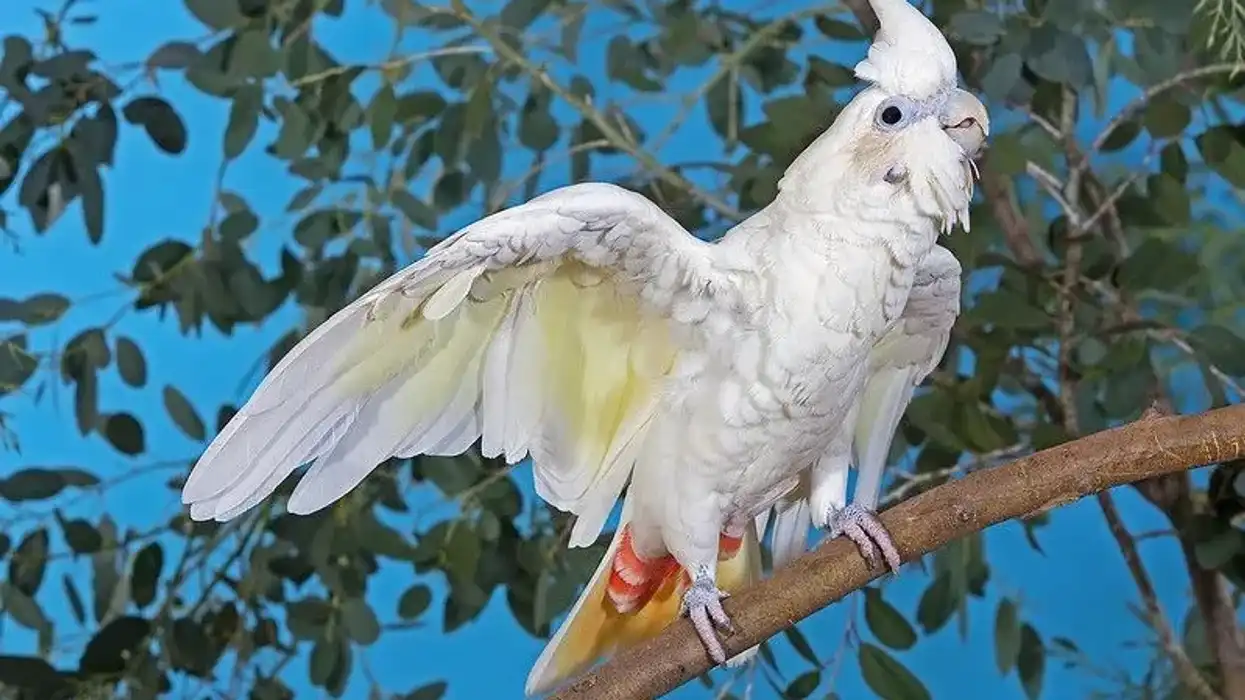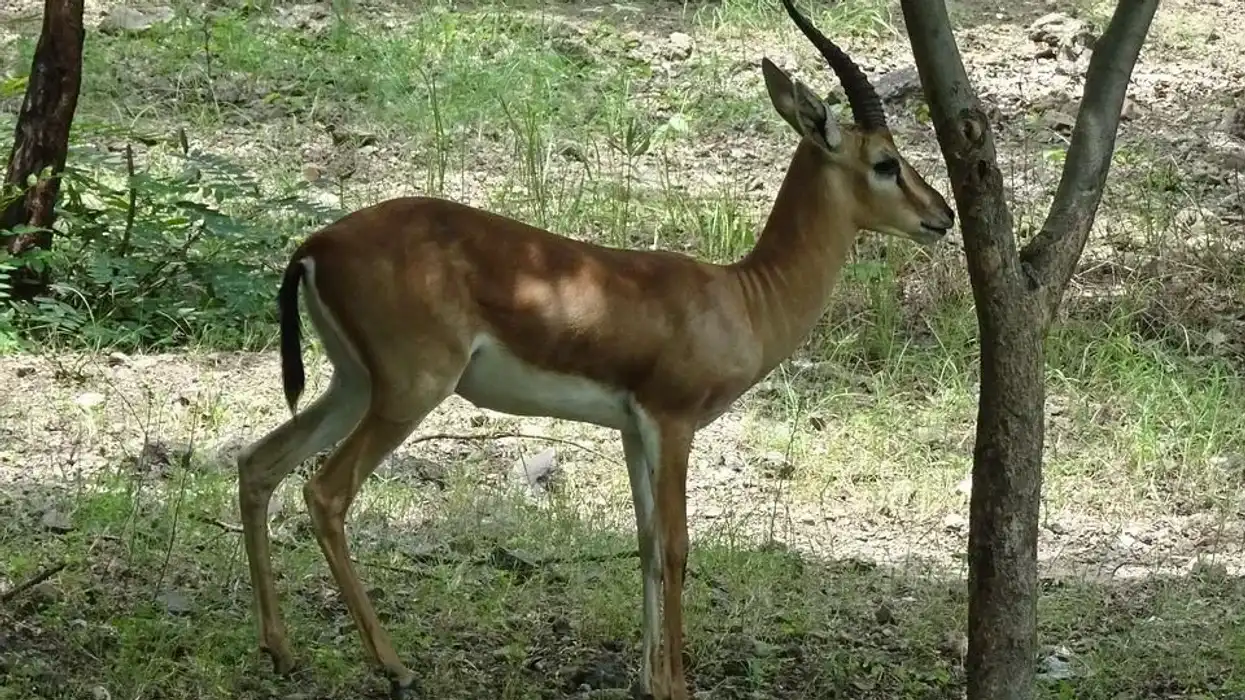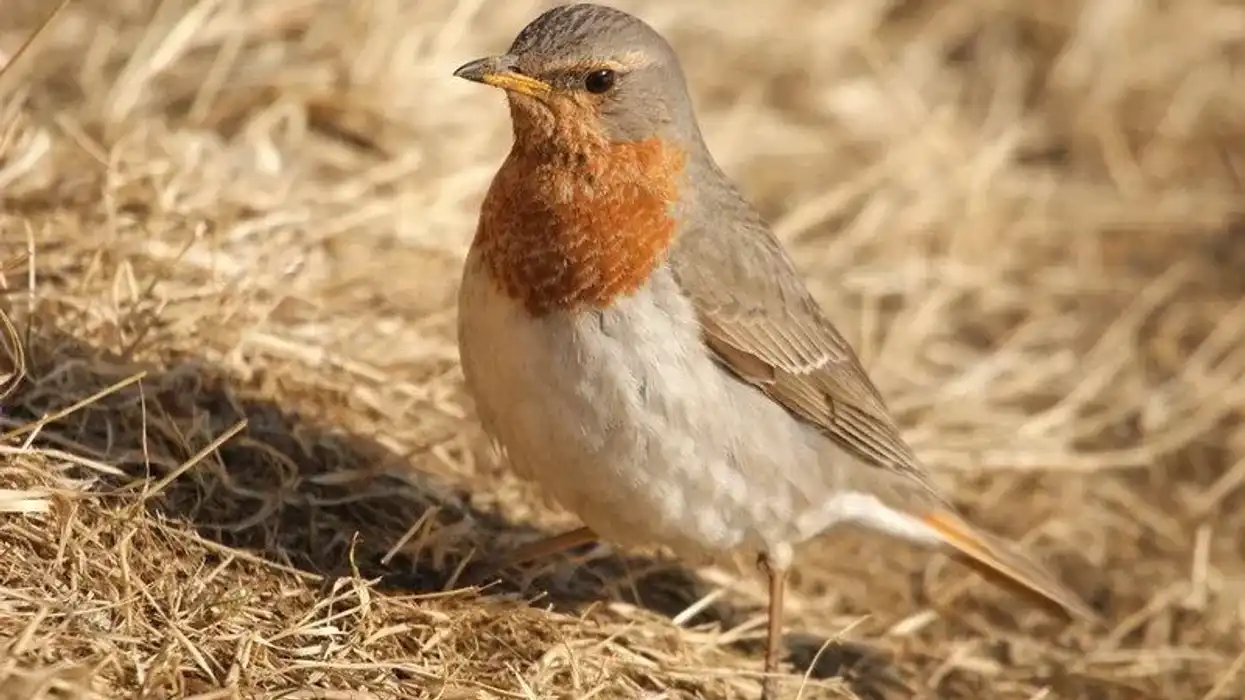Red-cheeked cordon bleu finches are a species of eye-catching, powder blue birds that can mainly be found in the tropical, arid region of Africa. These birds originate from East Africa, however, their sub-species can be found in various parts of Africa. They are resident, non-migratory birds that spend their entire lives feeding, nesting and breeding in their home grounds.
This red-cheeked cordonbleu (Uraeginthus bengalus) is a favorite among pet bird owners due to their bright blue color and adorable red cheek patches which make them look like they are blushing. They are usually high-energy, social birds who enjoy lounging in flocks and interacting with other birds.
They have a pleasant, twittering voice which is enjoyable to hear, and make for great bird companions.
To learn more about these beautiful blue birds, read on. For more relatable content, check out these purple finch facts and kestrel bird facts for kids.
Red-cheeked Cordon-bleu Interesting Facts
What type of animal is a red-cheeked cordon-bleu?
The red-cheeked cordon-bleu (Uraeginthus bengalus) is a type of non-migratory bird.
What class of animal does a red-cheeked cordon-bleu belong to?
This bird belongs to the class of Aves.
How many red-cheeked cordon-bleus are there in the world?
The exact population of the red-cheeked cordon-bleu has not been recorded. According to the IUCN Red List, this species has been listed to be of Least Concern; we can assume that there are more than 10,000 mature individuals thriving in the wild.
Where does a red-cheeked cordon-bleu live?
Red-cheeked cordon-bleu distribution can primarily be found in sub-Saharan Africa and Hawaii. They are mostly found flocking on dry grasslands, farmland, or savannas.
What is a red-cheeked cordon-bleu's habitat?
The red-cheeked cordon-bleu habitat consists mostly of tropical climates. They make their homes in dry, arid regions and lay their eggs in domed nests made out of sun-baked grass and twigs, in nearby trees and bushes.
Who do red-cheeked cordon-bleus live with?
These birds are very sociable and can often be found in huge flocks. During the breeding season, they form pairs and nest together.
How long does a red-cheeked cordon-bleu live?
The average red-cheeked cordon-bleu lifespan is about 5-10 years.
How do they reproduce?
The breeding season for these cordon-bleu finches appears to occur after the rainy season. Birds pair off and build dome-shaped nests together, which have a side entrance.
The female then lays a clutch of about three to six eggs. Both parents take turns incubating the eggs for a period of 11-14 days, after which the chicks hatch.
They stay dependent on their parents for around 17-29 days, after which they will leave the nest. These birds become mature at around six months of age, at which they can partake in breeding.
What is their conservation status?
According to the IUCN Red List, the red-cheeked cordon-bleu (Uraeginthus bengalus) currently does not face any major threats to its population and can be classified as being of Least Concern.
Red-cheeked Cordon-bleu Fun Facts
What do red-cheeked cordon-bleus look like?
Males of these species are a brighter, more vibrant blue than females. Both sexes have a grayish-brown smattering of color on their crowns, as well as light brown backs.
Their faces and underbellies have sky blue feathering, with their abdomens being yellow-brown. The most prominent feature of males are the bright red cheek spots which they sport, making it easy to distinguish them from females at a glance. They also have rosy pink beaks and legs.
How cute are they?
Red-cheeked cordon-bleu finches, with their appealing sky blue coloring and adorable red cheek patches, are among the cutest of birds. Their tiny size and high-pitched tittering make them desirable pets.
How do they communicate?
The red-cheeked cordon-bleu communicates by singing a series of rhythmic, high-pitched notes. It also makes buzzing and squeaking sounds to relay its various moods and to drive away any intruders from its nest. Females tend to sing primarily before laying eggs, and this exercise is thought to increase the bond between her and her breeding mate.
How big is a red-cheeked cordon-bleu?
The red-cheeked cordon-bleu is almost the same size as a sparrow, being only a fraction of an inch smaller. They measure 4.9- 5.1 in (12.5-13 cm) from wing to tail and are quite small in size when it comes to comparing birds.
How fast can a red-cheeked cordon-bleu fly?
The exact speed of flight of the red-cheeked cordon-bleu is unknown, however, they are quite active flyers and move swiftly from one place to another. As they are non-migratory birds, their flight patterns have not been tracked and their speed is not officially known.
How much does a red-cheeked cordon-bleu weigh?
Red-cheeked cordon-bleus weigh around 0.3-0.4 oz (8.9-11 g), averaging at 0.35 oz (9.9 g). They are lighter than blue jays.
What are the male and female names of the species?
There are no separate names for males and females of this species. However, we can easily distinguish males from females by identifying the red spots on their cheeks.
What would you call a baby red-cheeked cordon-bleu?
Baby red-cheeked cordon-bleu finches are called fledglings, chicks, or hatchlings.
What do they eat?
The red-cheeked cordon-bleu diet is classified as mostly granivorous, as they prefer to feed on millet, grains, and other small seeds. However, they also eat termites, mealworms, and at times, beeswax.
Are they dangerous?
They are peaceful birds and are not dangerous to humans. However, males can be quite territorial about their nests and become aggressive towards other males during the breeding season. Otherwise, they are cheerful, sociable birds.
Would they make a good pet?
Yes, these sociable finches make quite good pets and will fit in very well in any aviary. They should be kept with a couple more finches so that they don't get lonely and must be given adequate space to stretch their wings as they are quite active flyers.
Did you know...
A red-cheeked cordon-bleu finch nest tends to be round and dome-shaped, built-in bushes or 3-8 ft (91.4-243.8 cm) above the ground in trees. They are tightly woven from dry twine and grass to keep out intruders and have a side entrance which the nesters use to go in and out.
The red coloring on the male's cheeks may also appear orange or yellow in rare cases.
There are four subspecies of the red-cheeked cordon-bleu, which all have subtle differences regarding their appearance. These can be found in different regions in Africa.
Why is it called red-cheeked cordon-bleus?
The red-cheeked cordon-bleu (Uraeginthus bengalus) has been aptly named due to the dark red patches which form on the male bird's cheeks as it matures. The female does not develop this characteristic despite looking very similar to the male, however, these red spots have become a defining feature to identify this bird.
What is special about red-cheeked cordon-bleu?
Cordon-bleu finches mostly stand out because of their gorgeous blue feathering and vibrant red cheeks. Their high-pitched, melodious voices are soothing to listen to and they are an enjoyable addition to any aviary.
These peaceful blue birds are fun to watch in action and keep as pets, as well as observe in the wild. They are quite intelligent as well, seeing how they skillfully construct woven nests with a side entrance, which keeps them safe from predators.
Here at Kidadl, we have carefully created lots of interesting family-friendly animal facts for everyone to discover! For more relatable content, check out these European goldfinch interesting facts and chaffinch facts pages.
You can even occupy yourself at home by coloring in one of our free printable red-cheeked cordon-bleu coloring pages.









